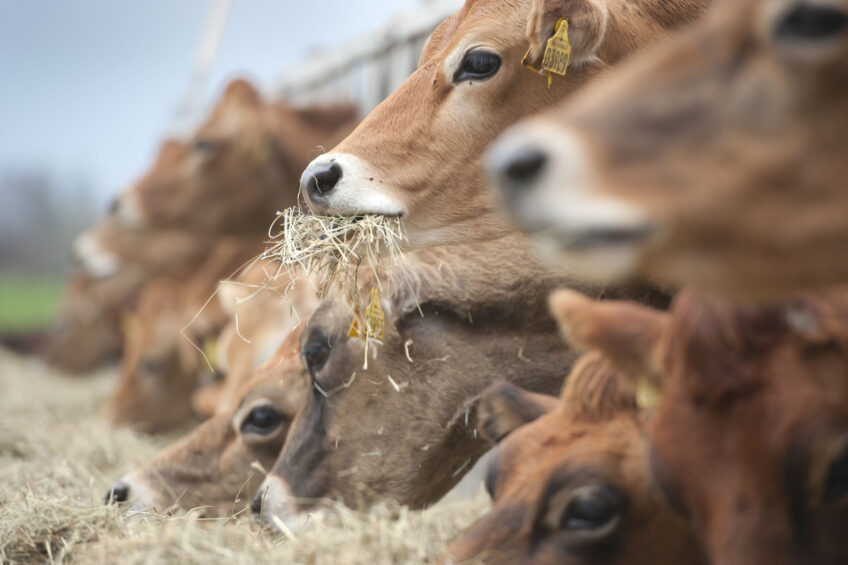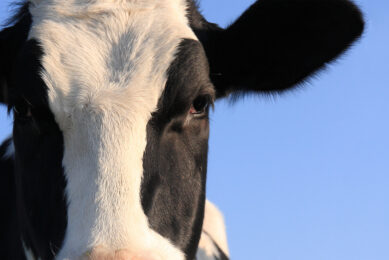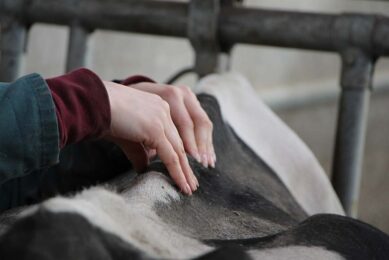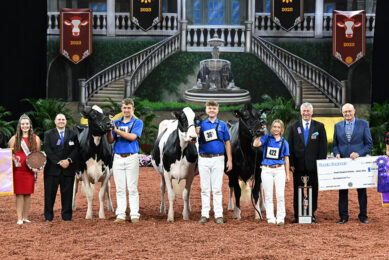Better feed efficiency: Holstein or Jersey?

At the recently held EAAP conference, a study was presented by Bingjie Li, a researcher from the Aarhus University in Denmark, which raised the question whether the Holstein or Jersey breeds are better at feed efficiency.
With dairy farmers under pressure financially they have to account for every cent when it comes to the cost of milk production. There has often been a debate as to which breed of dairy cow is the more profitable. Those milking with Holsteins tend to opt for higher yields whereas dairy farmers milking the Jersey breed are familiar with lower yields but a higher milk quality. However, there are other factors at play including the cost of feeding these two breeds compared to their output of milk. In other words, which one has the best feed efficiency?
A joint study conducted by Swedish and Danish universities looked into the feed efficiencies of two dairy cow breeds concentrating on two traits in particular. Dry matter intake (DMI) and adjusted feed intake (AFI) relate to feed efficiency in dairy cattle. The study aimed to estimate genetic variances and genetic parameters for DMI and AFI in cows from the Holstein and Jersey breeds by random regression methods (RR).
Genetic variance
In total, DMI observations in the first 44 lactation weeks from 813 primiparious Holstein cows and 301 primiparious Jersey cows were included. Two RR methods, RR using linear splines and RR using Legendre polynomials, were used to estimate the variance components for DMI and AFI for each breed. The analyses for AFI were carried out by adjusting DMI observations for the cows’ milk yields, metabolic body weights (MBW), and the change of body weight during the 44 lactation weeks in the genetic model. The results indicated potential differences between Holstein and Jersey cows in genetic variance for DMI and AFI. The genetic variance for AFI was lower than that for DMI over the 44 lactation weeks.
Feed intake as a trait
The genetic variance for DMI significantly increased along lactation in each breed, whereas the genetic variance was relatively stable for AFI during the 44 lactation weeks. Both DMI and AFI were moderately heritable, but the heritability for AFI tended to be lower than that for DMI. The heritability for DMI and AFI were less different between breeds compared with genetic variances. In addition, the breed difference was also shown in the regression coefficient of DMI on the change of body weight, whereas the two breeds were similar in their regression coefficients of DMI on milk yields and MBW. Based on the study’s findings, heterogeneity might exist between dairy breeds in genetic variation for feed intake and for AFI, which should be considered in a future multi-breed genetic evaluation for feed efficiency in dairy cattle. Additionally, adjusted feed intake could be a candidate trait for feed efficiency in dairy cattle due to its moderate heritability and its considerations on cows’ milk production and body maintenance.
The 67 th Annual Meeting of the European Federation of Animal Science (EAAP) was held in Belfast, Ireland from 29 August – 2 Sept 2016.
Join 13,000+ subscribers
Subscribe to our newsletter to stay updated about all the need-to-know content in the dairy sector, two times a week.










